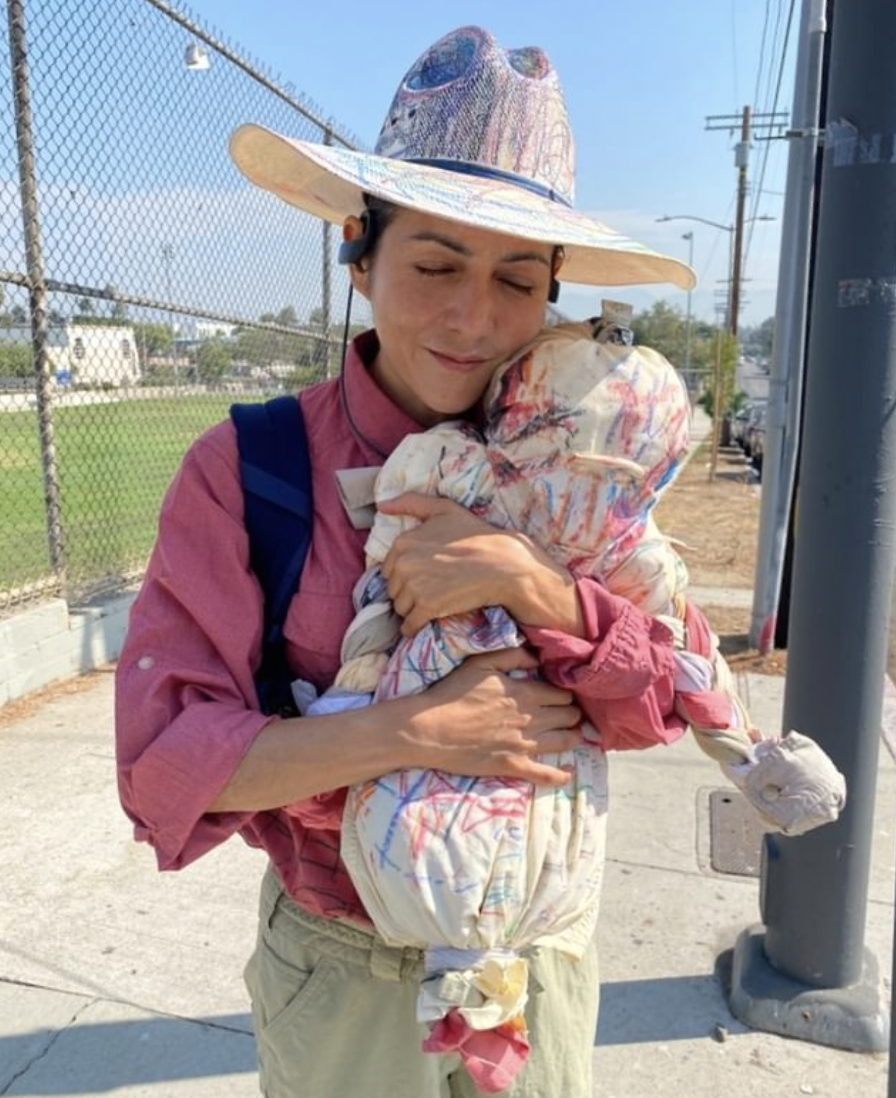By Ryan Greenberg
Award-winning visual artist Carmen Argote finds inspiration for her art in the physical world around her, from moving through space and allowing her body to interact with her surroundings, she recently told a UC Santa Barbara audience.
Born in Guadalajara, Mexico and now based in Los Angeles, Argote began her recent presentation in the UCSB Art Department’s Visiting Artist Colloquium series by describing a collection called Pyramids, inspired by her walks through Los Angeles’s Lincoln Park. Pyramids, which was displayed at the Panel LA exhibition in 2017, includes a collection of papers with abstract drawings made of coffee stains and a series of platforms arranged into stairs with coffee-makers placed on top.
“I learn something from every show. But when I think about this show, I really think about allowing my walking practice to come through,” Argote said in the recent Zoom event. Nearly 200 people signed on to listen to Argote, who has been exhibited all over California, and also Denver, Miami, Bogota, Guadalajara, and Istanbul.
The artist, who works in a multitude of 2-D and 3-D artistic mediums, got both her bachelor’s degree and Master of Fine Arts from UCLA, and went on to complete an artist’s residency at the Skowhegan School of Painting and Sculpture in 2009. Argote gave students a virtual tour of her website, telling the stories behind her works.
Artworks included in Carmen Argote’s Pyramids collection
Argote then shared a video of art she created for a collection she calls Be Loved, sometimes referred to as Beloved. Argote shared footage of herself creating art at a cemetery. In one clip, Argote placed a canvas over a tombstone, and then mashed up red crayon wax to make a rubbing. She then used the ground-up wax and rubbed it over the tombstone so that the words on the tombstone would appear on the canvas. Argote chose words like “mother” and “beloved” from the tombstones, and made canvases of these words overlapping each other over and over.
A canvas using wax rubbings in L.A. artist Carmen Argote’s Beloved series
Argote described her process and the meaning behind her work, saying she wants to use her entire body in making her artwork, and the work to reflect that.
Artist Carmen Argote holding one of her ‘comfort’ objects
Argote then offered attendees a tour of her home studio. The walls of the main workspace of the studio offered many displays of 2-D visual art on the walls, covered by a protective plastic film. The room was also filled with what Argote calls “comfort objects,” soft holdable objects, such as stuffed towel wrappings or miniature figurines of people or animals that she said were inspired by therapy sessions. Argote created these objects because she noticed a “transference of [herself] into the object,” and they also made her feel motherly — an example of how the artist “feels a connection to how objects can hold people, ideas, actions, and energy.”
Argote then virtually took attendees outside to show her rooster coop. She considers her flock a part of not only her studio, but also her home. Argote has art displayed in the coop for the roosters to enjoy, and each rooster has a comfort object of their own as well.
In the Q&A after her talk, Argote described an interactive process between her own emotions or attitudes and her art. “I wanted to be surprised by my artwork. I wanted to have a conversation. I didn’t want to just have an idea, and make it,” she said. Argote then challenged her audience to push beyond the obvious and learn from art. “You have to learn that the artwork knows more than you,” she told art students.
Ryan Greenberg is a student at UC Santa Barbara who studies Communication and Professional Writing. He wrote this article for his Writing Program course Digital Journalism.




